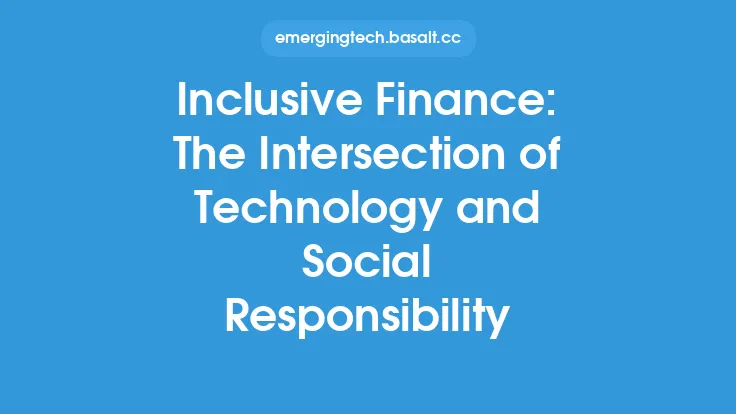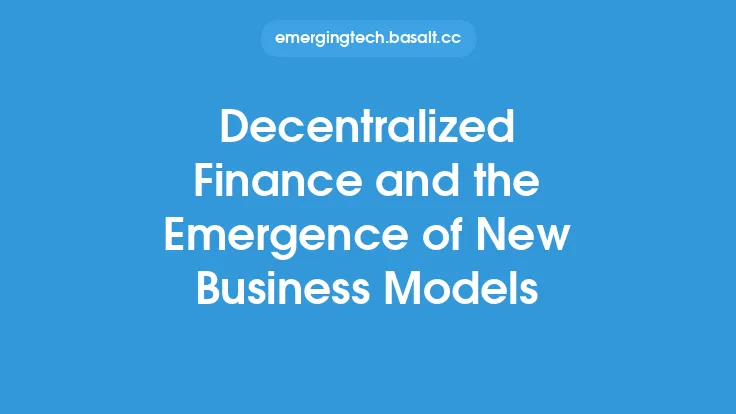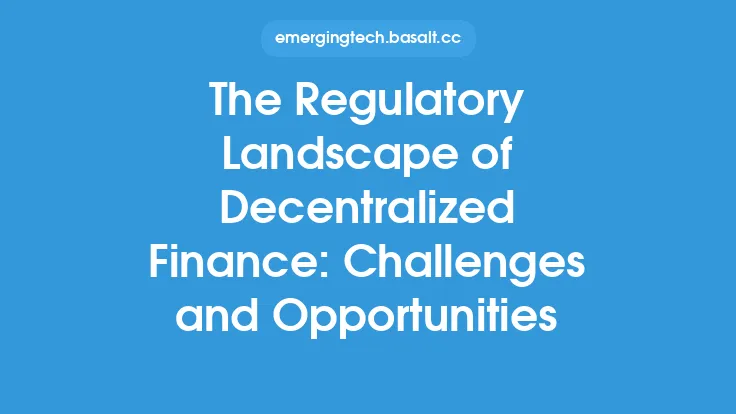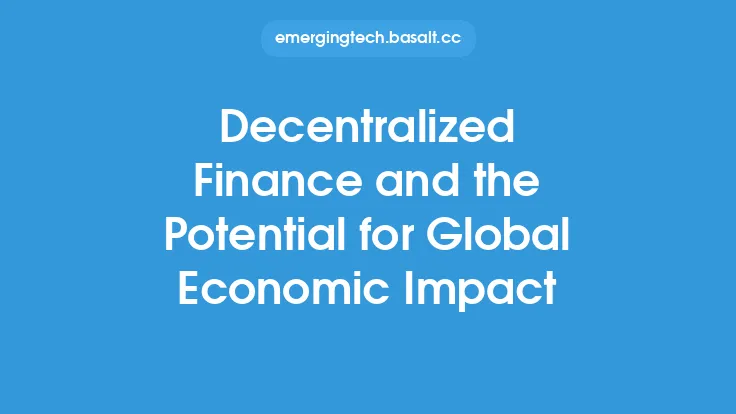The world of finance is undergoing a significant transformation with the emergence of decentralized finance (DeFi) and its intersection with traditional banking. DeFi, built on blockchain technology, offers a decentralized and transparent alternative to traditional financial systems. This intersection is creating new opportunities for innovation, collaboration, and disruption in the financial sector. In this article, we will explore the intersection of DeFi and traditional banking, highlighting the key aspects, benefits, and challenges of this convergence.
Introduction to Decentralized Finance
Decentralized finance, or DeFi, refers to a set of financial services and systems that operate on blockchain technology and are decentralized, meaning that they are not controlled by a single entity or institution. DeFi platforms and applications provide a wide range of financial services, including lending, borrowing, trading, and investing, all of which are facilitated by smart contracts and decentralized networks. The decentralized nature of DeFi allows for greater transparency, security, and accessibility, making it an attractive alternative to traditional financial systems.
Traditional Banking and its Limitations
Traditional banking, on the other hand, is a centralized system that has been the backbone of the financial sector for centuries. Traditional banks provide a wide range of financial services, including deposit accounts, loans, credit cards, and investment products. However, traditional banking has several limitations, including high fees, limited accessibility, and a lack of transparency. Additionally, traditional banks are often subject to strict regulations and capital requirements, which can limit their ability to innovate and adapt to changing market conditions.
The Intersection of DeFi and Traditional Banking
The intersection of DeFi and traditional banking is creating new opportunities for innovation and collaboration. Traditional banks are beginning to explore the potential of DeFi and blockchain technology, recognizing the benefits of increased efficiency, reduced costs, and improved security. At the same time, DeFi platforms and applications are seeking to leverage the expertise and resources of traditional banks to improve their services and expand their reach. This convergence is leading to the development of new business models, products, and services that combine the best of both worlds.
Benefits of the Intersection
The intersection of DeFi and traditional banking offers several benefits, including increased efficiency, reduced costs, and improved security. DeFi platforms and applications can leverage the expertise and resources of traditional banks to improve their services and expand their reach. At the same time, traditional banks can benefit from the increased efficiency and reduced costs offered by DeFi and blockchain technology. Additionally, the intersection of DeFi and traditional banking can lead to increased accessibility and financial inclusion, as DeFi platforms and applications can provide financial services to underserved populations and regions.
Challenges and Limitations
Despite the benefits of the intersection of DeFi and traditional banking, there are also several challenges and limitations. One of the main challenges is regulatory uncertainty, as the regulatory framework for DeFi and blockchain technology is still evolving and unclear. Additionally, there are concerns about security and risk, as DeFi platforms and applications are vulnerable to hacking and other forms of cyber attack. Furthermore, there are also concerns about scalability and interoperability, as DeFi platforms and applications often operate on different blockchain networks and protocols.
Use Cases and Applications
The intersection of DeFi and traditional banking has several use cases and applications, including payment systems, lending and borrowing, trading and investing, and identity verification. DeFi platforms and applications can provide faster, cheaper, and more secure payment systems, leveraging the benefits of blockchain technology and smart contracts. Additionally, DeFi platforms and applications can provide lending and borrowing services, leveraging the benefits of decentralized networks and smart contracts. Furthermore, DeFi platforms and applications can provide trading and investing services, leveraging the benefits of decentralized exchanges and blockchain technology.
Future Outlook
The future outlook for the intersection of DeFi and traditional banking is promising, with several trends and developments expected to shape the industry in the coming years. One of the main trends is the increasing adoption of DeFi and blockchain technology by traditional banks, as they seek to leverage the benefits of increased efficiency, reduced costs, and improved security. Additionally, there is expected to be increased regulatory clarity, as governments and regulatory bodies seek to provide a clear and consistent framework for DeFi and blockchain technology. Furthermore, there is expected to be increased innovation and collaboration, as DeFi platforms and applications seek to leverage the expertise and resources of traditional banks to improve their services and expand their reach.
Conclusion
In conclusion, the intersection of DeFi and traditional banking is creating new opportunities for innovation, collaboration, and disruption in the financial sector. While there are several benefits to this convergence, including increased efficiency, reduced costs, and improved security, there are also several challenges and limitations, including regulatory uncertainty, security and risk concerns, and scalability and interoperability issues. As the industry continues to evolve and mature, it is likely that we will see increased adoption of DeFi and blockchain technology by traditional banks, as well as increased regulatory clarity and innovation and collaboration between DeFi platforms and applications and traditional banks. Ultimately, the intersection of DeFi and traditional banking has the potential to transform the financial sector, providing faster, cheaper, and more secure financial services to individuals and businesses around the world.





